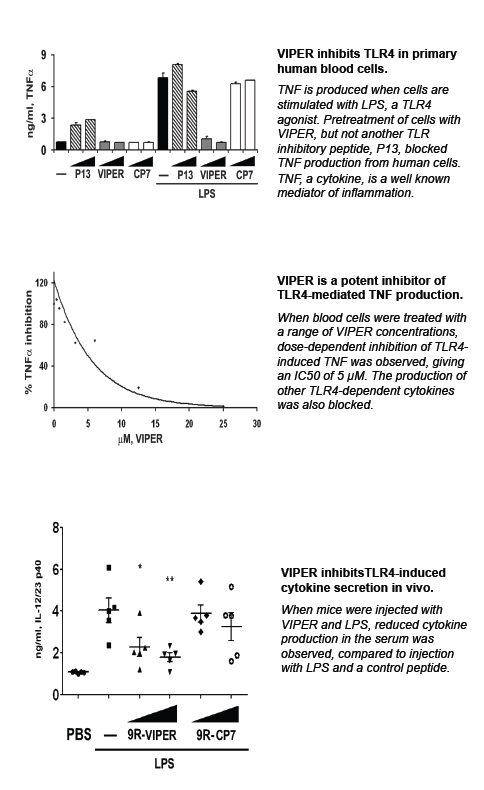Cat. #152554
MCF7/AnaR-4 Cell Line
Cat. #: 152554
Sub-type: Continuous
Unit size: 1x10^6 cells / vial
Organism: Human
Tissue: Breast
Disease: Cancer
£800.00
This fee is applicable only for non-profit organisations. If you are a for-profit organisation or a researcher working on commercially-sponsored academic research, you will need to contact our licensing team for a commercial use license.
Contributor
Inventor: Anne Lykkesfeldt
Institute: Danish Cancer Society, Denmark
Primary Citation: Hole et al. 2015. Int J Oncol. 46(4):1481-1490. PMID: 25625755.
Tool Details
*FOR RESEARCH USE ONLY (for other uses, please contact the licensing team)
- Name: MCF7/AnaR-4 Cell Line
- Alternate name: MCF-7/AnaR-4; AnaR-4
- Cancer: Breast cancer
- Cancers detailed: Breast cancer
- Research fields: Cancer;Drug development
- Tool sub type: Continuous
- Parental cell: MCF7
- Organism: Human
- Gender: Female
- Tissue: Breast
- Disease: Cancer
- Growth properties: Breast cancer cell line resistant to the aromatase inhibitor anastrozole. Estrogen receptor positive.
- Conditional: No
- Description: MCF7/AnaR-4 is a cell culture model mimicking acquired resistance of aromatase inhibitors (AIs) - an anti-cancer therapy. This breast cancer cell line was established from MCF7/S0.5 cells, which originates from MCF7 cells. The cellular classification is epithelial, and their shape is polygonal. The MCF7/AnaR-4 cell line is resistant to the third generation AI - anastrozole (Arimidex). MCF/AnaR-4 is oestrogen receptor positive. Third generation AIs have proven to be effective treatment for oestrogen receptor positive (ER+) breast cancer and as such are recommended as first line endocrine therapy for postmenopausal ER+ breast cancer patients. Previous applications of this cell line include western blot analysis of protein expression. Since molecular mechanisms of AI resistance are largely undisclosed, the development of cell lines resistant to the non-steroidal AI anastrozole allows the study of the molecular basis for AI resistance to find new targets for treatment.
- Application: Investigation of molecular mechanisms
- Production details: Anastrozole-resistant cell lines were established from MCF7 cells grown in medium with 10% NCS and 10-7 M testosterone. A culture of MCF7 cells were treated with 10-7 M anastrozole for one week, trypsinised and seeded in serial dilutions in 24-well plates. Single colonies were transferred to new wells and gradually expanded in medium with anastrozole. After 2-3 months, the isolated colonies gave rise to anastrozole-resistant cell lines, which could be grown in anastrozole-containing medium with a weekly split ratio of ~1:25. The MCF7 cell line was authenticated in January 2014 by DNA profiling using short tandem repeat loci and found to be matching the genetic profile reported for the MCF7 cell line.
- Cellosaurus id: CVCL_5A12
Target Details
- Target: Anastrozole resistance
Applications
- Application: Investigation of molecular mechanisms
- Application notes: Human breast cancer cell line derived from MCF7 cells Other related cell lines: - LetR-1, LetR-2, LetR-3 and LetR-4 resistant to the non-steroidal AI letrozole - ExeR-1, ExeR-2, ExeR-3 and ExeR-4 resistant to the steroidal AI exemestane - AnaR-1, AnaR-2 and AnaR-3 resistant to the non-steroidal AI anastrozole Passage 431 (AL3988, AL3994)
Handling
- Format: Frozen
- Passage number: Passage 431 (AL3988, AL3994)
- Growth medium: Phenol-red-free DMEM/F12 medium supplemented with 10% newborn calf serum, 2.5 mM Glutamax, 6 ng/ ml insulin, 0.1 uM testosterone and 0.1 uM anastrozole.
- Temperature: 37° C
- Atmosphere: Humidified air with 5% CO2
- Unit size: 1x10^6 cells / vial
- Shipping conditions: Dry ice
Related Tools
- Related tools: MCF7/AnaR-2 Cell Line Other related cell lines: - LetR-1, LetR-2, LetR-3 and LetR-4 resistant to the non-steroidal AI letrozole - ExeR-1, ExeR-2, ExeR-3 and ExeR-4 resistant to the steroidal AI exemestane - AnaR-1, AnaR-2 and AnaR-3 resistant to the non-steroidal AI anastrozole
References
- Hole et al. 2015. Breast Cancer Res Treat. 149(3):715-726. PMID: 25667100.
- Hole et al. 2015. Int J Oncol. 46(4):1481-90. PMID: 25625755.







